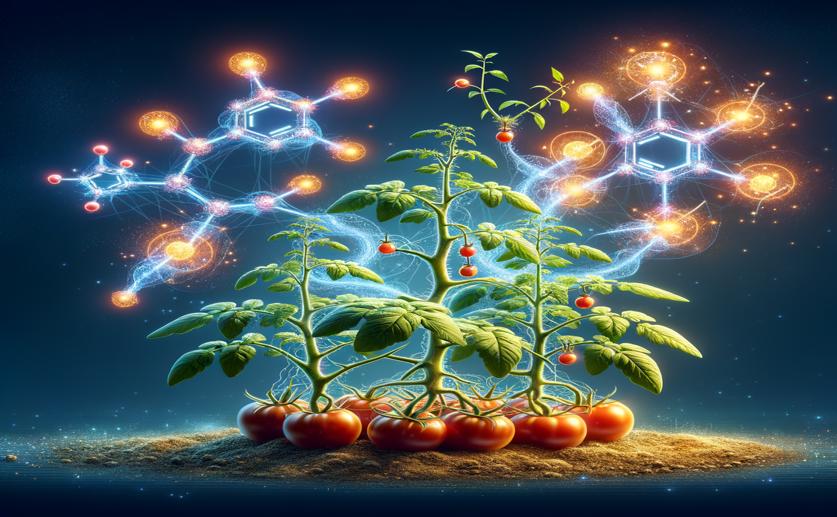
How a Key Protein Pair Controls Growth and Hormone Production in Tomato Plants
Greg Howard
28th August, 2024

Image Source: Natural Science News, 2024
Key Findings
- The study from the University of Idaho reveals that SINA1 and BSD1 regulate vegetative growth in tomato plants by controlling gibberellin (GA) biosynthesis
- SINA1 tags BSD1 for destruction, reducing its levels, which in turn decreases the expression of the growth-promoting gene BRG1
- Reduced GA levels in plants with high SINA1 or knocked-out BSD1 and BRG1 lead to dwarfism, but applying bioactive GA3 restores normal growth
VegetablesBiochemPlant Science
References
Main Study
1) The SINA1-BSD1 Module Regulates Vegetative Growth Involving Gibberellin Biosynthesis in Tomato.
Published 27th August, 2024
https://doi.org/10.1002/advs.202400995
Related Studies
2) Brassinosteroid, gibberellin and phytochrome impinge on a common transcription module in Arabidopsis.
3) From dwarves to giants? Plant height manipulation for biomass yield.
4) The CYP88A cytochrome P450, ent-kaurenoic acid oxidase, catalyzes three steps of the gibberellin biosynthesis pathway.
Journal: Proceedings of the National Academy of Sciences of the United States of America, Issue: Vol 98, Issue 4, Feb 2001



 16th July, 2024 | Jenn Hoskins
16th July, 2024 | Jenn Hoskins